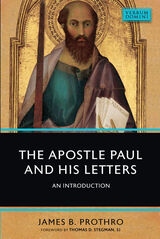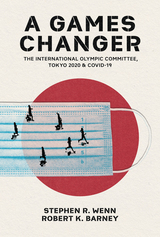5 books about His Letters

The Apostle Paul and His Letters
An Introduction
James B. Prothro
Catholic University of America Press, 2022
The letters of the Apostle Paul are central witnesses to the Christian faith and to the earliest history of Christianity. And yet, when students, preachers, and others turn to Paul, they find many things “hard to understand” (2 Peter 3:16) in these ancient writings.
James Prothro’s new book aims to help readers see the Apostle’s faith and hope at work as he evangelized the nations. Steeped in up-to-date scholarship and a passion for the gospel Paul preached, Prothro draws readers into Paul’s life and letters in order to help them hear the Apostle’s voice. The book’s chapters offer introductions to Paul’s background, life, and legacy; an introduction to ancient letter writing; a guide to understanding Paul’s theology across the letters; a survey of the portrait of Paul in the Book of Acts; separate treatments of each letter’s background and purpose; treatments of key theological topics in each letter and a thorough outline of each letter showing its arguments and how they make sense.
Prothro introduces complex matters with clarity, balance, and an inviting style. He not only offers answers but models how to ask questions, helping us reason through Paul’s letters as ancient documents and as Christian Scripture. This book will prove a valuable introduction for those who study, teach, and preach these biblical books.
[more]

Nietzsche
A Self-Portrait from His Letters
Friedrich Nietzsche
Harvard University Press, 1971

The One Voice of James Dickey
His Letters and Life, 1942-1969
Edited & Commentary by Gordon Van Ness
University of Missouri Press, 2003
In The One Voice of James Dickey, Gordon Van Ness skillfully documents James Dickey’s growth from a callow teen interested primarily in sports to a mature poet who possessed literary genius and who deliberately advanced himself and his career. The letters from 1942 through 1969 depict Dickey gradually establishing a self-identity, deciding to write, struggling to determine a subject matter and style, working determinedly to gain initial recognition, and eventually seeking out the literary establishment to promote himself and his views on poetry. The letters also portray a complex personality with broad interests, acute intelligence, and heightened imagination as well as a deep need to re-create his past and assume various roles in the present.
From Dickey’s extensive correspondence, Van Ness has selected not only those letters that best reveal the chronological development of Dickey’s career and his conscious efforts to chart its course, but also those that portray his other interests and depict the various features of his personality. The letters are grouped by decade, with each period placed in perspective by a critical introduction. The introductory sections offer a psychological understanding of Dickey’s personality by identifying the needs and fears that affected his actions. They also explain the American literary and cultural scene that Dickey confronted as he matured. Together, the letters and commentary yield a sense of Dickey’s complex personality—both the man as a writer and the writer as a man—while arguing that he remained “one voice.”
Because how a writer writes—the appearance of a writer’s words on a page—makes a statement, the letters are reproduced here without alterations. There are no silent deletions or revisions; the original spelling and punctuation have been preserved. Dickey’s letters gathered in The One Voice of James Dickey portray a poet’s consciousness, chronicling its growth and revealing its breadth. They do not contain the whole truth, but they are what we have.
[more]

The One Voice of James Dickey
His Letters and Life, 1970-1997
Edited & Commentary by Gordon Van Ness
University of Missouri Press, 2005
This book completes and complements the first volume of the letters and life of James Dickey. Picking up where the previous volume left off, The One Voice of James Dickey: His Letters and Life, 1970–1997 chronicles Dickey’s career from the unparalleled success of his novel Deliverance in 1970 through his poetic experimentation in such books as The Eye Beaters, Blood, Victory, Madness, Buckhead and Mercy and Puella until his death in 1997. A prolific correspondent, Dickey tried to write at least three letters a day, and these letters provide a unique way for Gordon Van Ness to portray the vast and varied panorama of Dickey’s life.
The letters are grouped by decade largely because Dickey’s life was so very different in the seventies, eighties, and nineties. The chapter titles and their progression, as in the first volume, reflect Dickey’s sense that his life and career were a kind of warfare and that he was on a mission. A final section, “Debriefings,” offers a concise overview of Dickey’s full career. In earlier chapters, letters to people as varied as Saul Bellow, Arthur Schlesinger, and Robert Penn Warren indicate Dickey’s belief that this correspondence was a valuable networking tool, likely to open up new opportunities, while other letters, such as ones to Dickey’s oldest son, Christopher, expose the tender aspects of the author’s character.
No other critical study so well projects the development of Dickey’s career while simultaneously exhibiting the diversity of his interests and the often-conflicting sides of his personality. In the strictest sense, this volume is not a life-in-letters, but it does provide a general sense of Dickey’s comings, goings, and doings. Van Ness’s selection of letters suggests an acute understanding of Dickey, and his editorial commentary examines and reveals Dickey’s brilliance.
[more]

Os Praesens Ciceronis Epistularis
The Immedaite Mouth of Cicero in His Letters
Reginald Foster
Catholic University of America Press
The Immediate Mouth of Cicero in His Letters, consists of two books. An audiobook presents the integral Latin and English texts of 51 letters Cicero wrote to family and close associates all recited by Reginald Foster. A printed book presents the teaching method of Reginald exemplified by 160 imagined dialogues between a teacher and students working with original thoughts of Cicero to learn the Latin language from the first encounter.
This companion volume to The Bones' Meats Abundant analyses how Cicero expressed himself in the Latin of these same 51 letters, with cross references to fuller explanations in The Mere Bones of Latin.
Audio book
LISTEN to Cicero writing to family and close associates recited by Reginald Foster who embodies that living voice of the master Latinist. READ along while listening and RECITE together with the audio. CONSULT the English text of our translations.
Printed book
LEARN from the first encounter with the Latin language by reading from Cicero's letters and COMPLETE your understanding through regular readings.
Teach the Latin language using excerpts from Cicero's letters from the first day. Understand how Reginald taught the Latin language using solid, unmodified, original Latin texts. Learn to teach from Reginald.
[more]
READERS
Browse our collection.
PUBLISHERS
See BiblioVault's publisher services.
STUDENT SERVICES
Files for college accessibility offices.
UChicago Accessibility Resources
home | accessibility | search | about | contact us
BiblioVault ® 2001 - 2025
The University of Chicago Press









